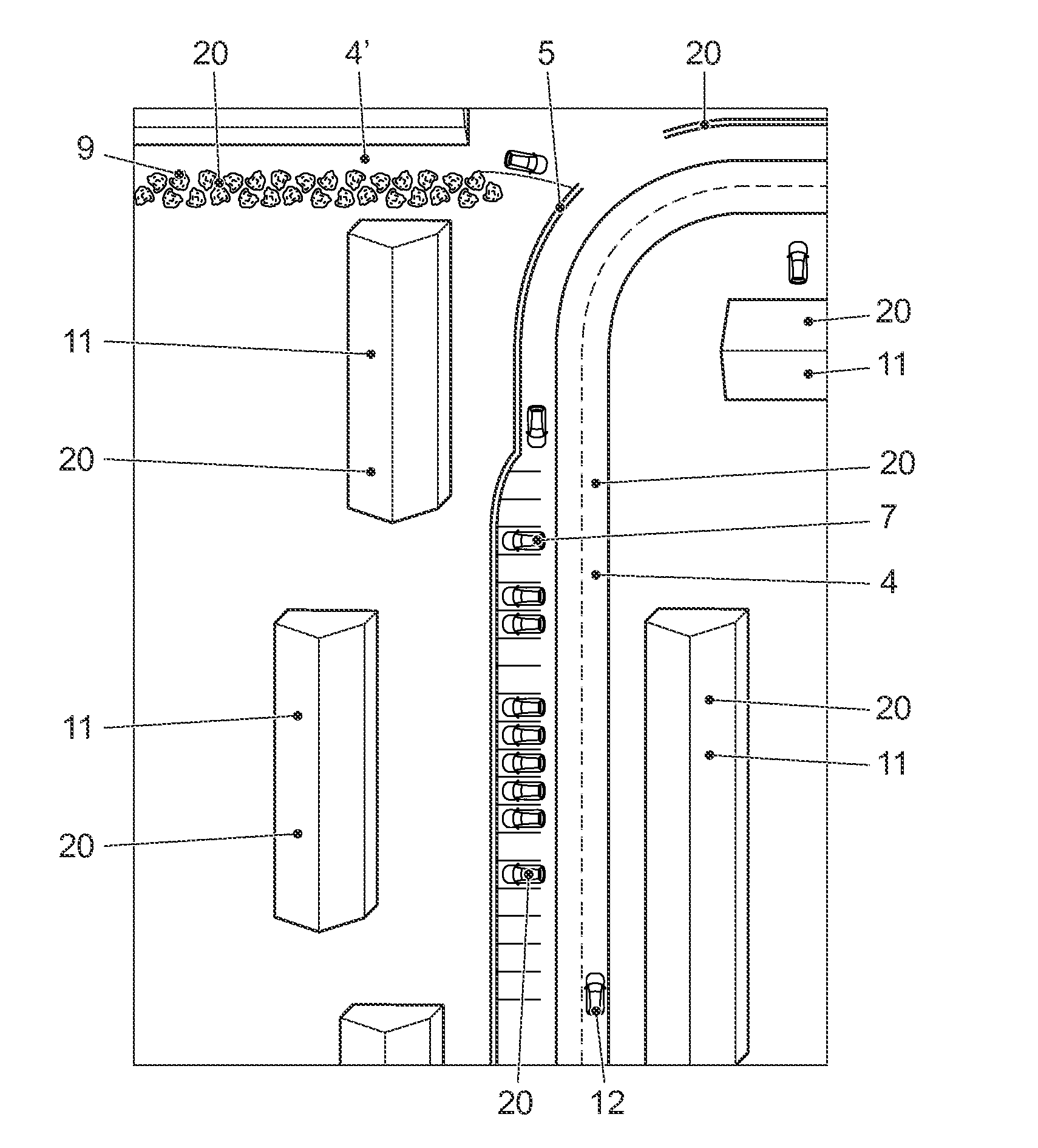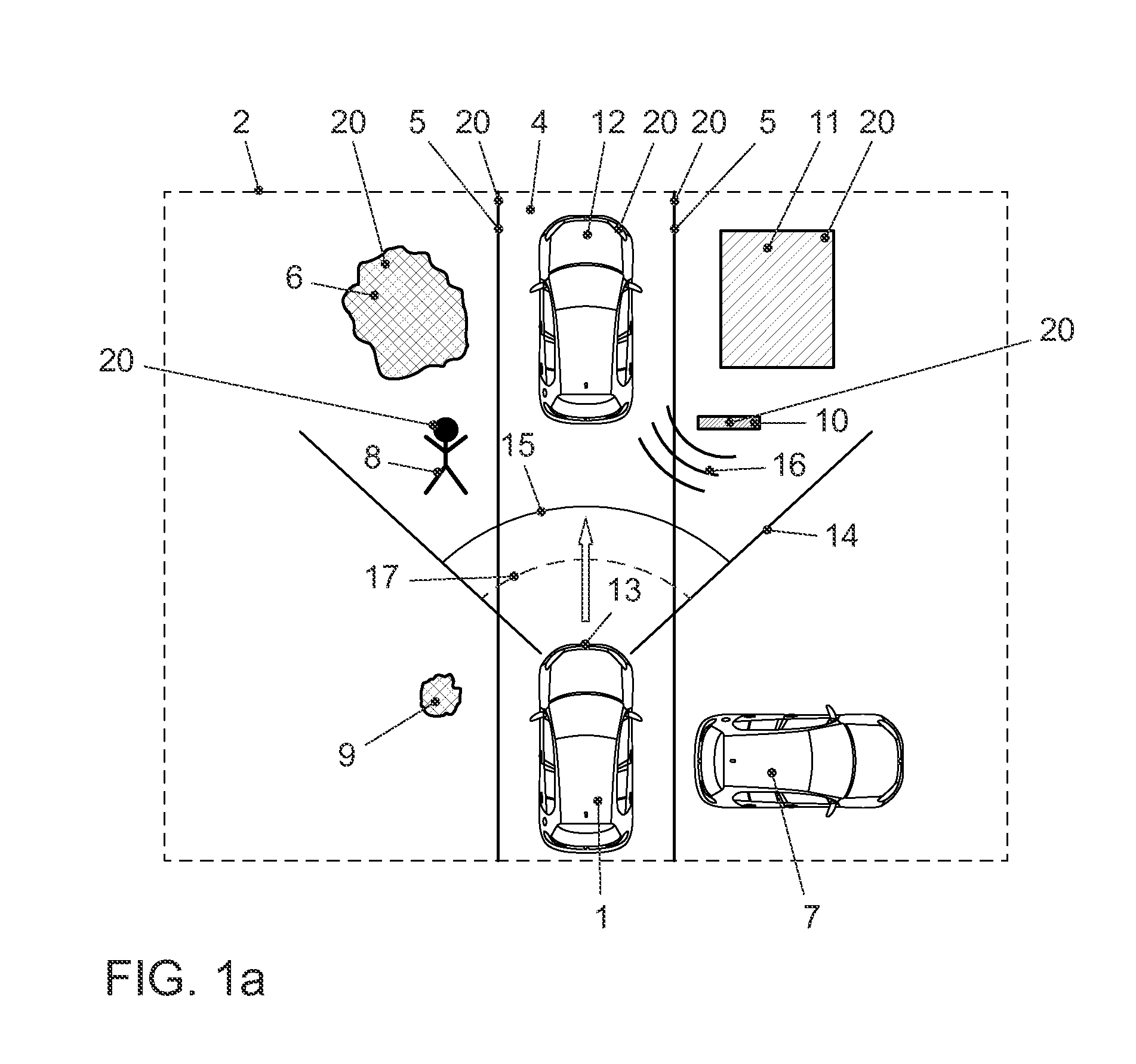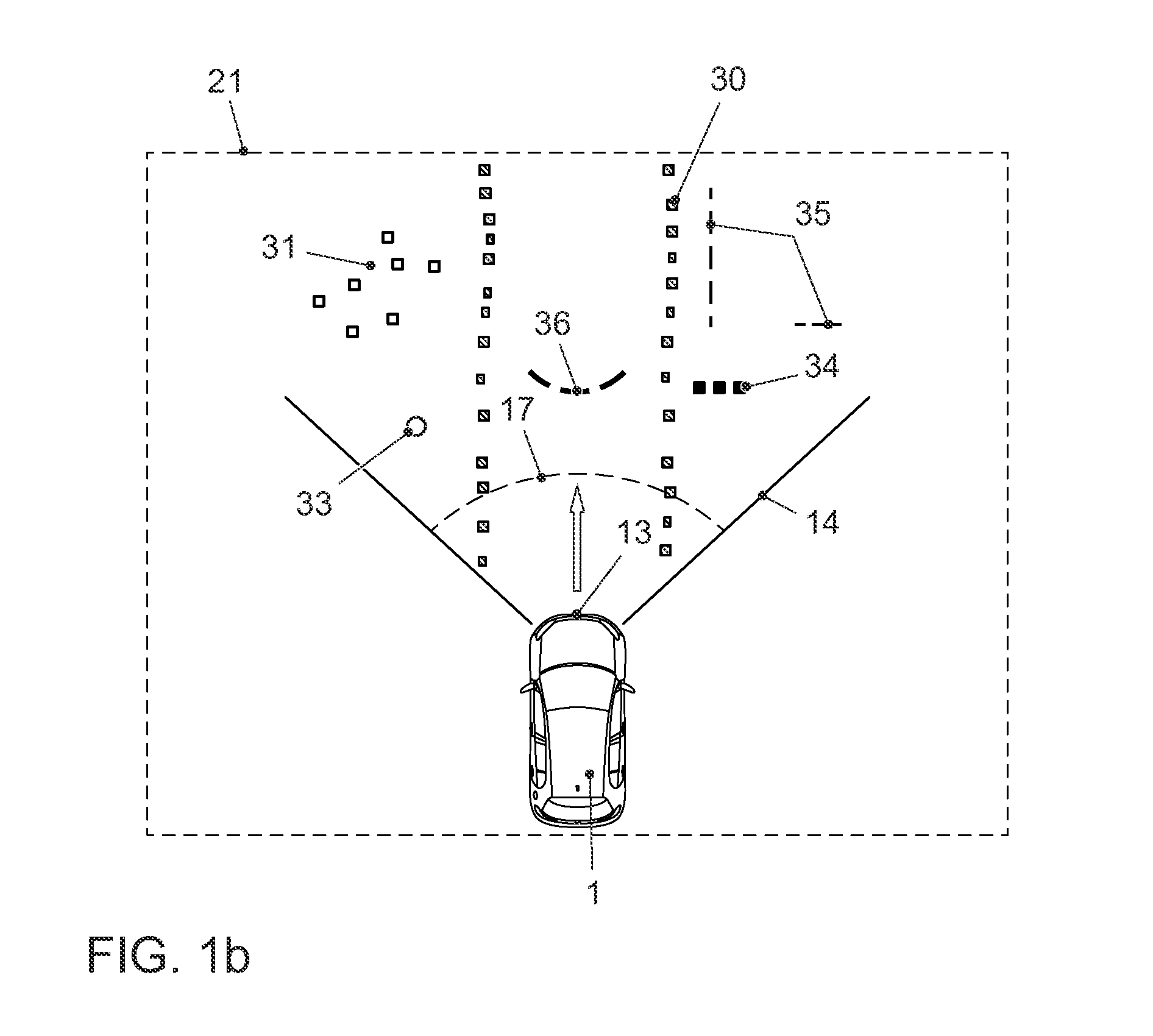Method and device for the localization of a vehicle from a fixed reference map
a technology for vehicles, applied in measurement devices, using reradiation, instruments, etc., can solve the problems of reducing the accuracy of determining the position of objects, reducing the accuracy of determining objects, and not providing unambiguous features, etc., to achieve the effect of optimizing the accuracy of determining object positions
- Summary
- Abstract
- Description
- Claims
- Application Information
AI Technical Summary
Benefits of technology
Problems solved by technology
Method used
Image
Examples
Embodiment Construction
[0055]FIG. 1a shows a typical view of the environment in form of a schematic representation, such as it often can be found in daily traffic. A vehicle 1 is moving on a lane 4 in the surrounding environment 2. The vehicle 1 features a radar sensor 13, which e.g. can be affixed at the front end of the vehicle 1. The radar sensor 13 has an emission range 14 within which the objects 20 are captured. In the embodiment shown in FIG. 1, the objects 20 comprise, for example, a curb 5, a tree 6, a parked vehicle 7, a pedestrian 8, a bush 9, a metal sign 10, a house 11 and a moving vehicle 12. The opening angle 17 of the emission range 14 can, for example, be 140°, but can also be larger or smaller. In the embodiment shown in FIG. 1, the radar sensor 13 emits a radar impulse 15 which is reflected as a radar impulse response 16 by the objects 20 which lie within the opening angle 17 of the emission range 14, for example by a metal sign 10. The radar impulse response 16 is received by the radar...
PUM
 Login to View More
Login to View More Abstract
Description
Claims
Application Information
 Login to View More
Login to View More - R&D
- Intellectual Property
- Life Sciences
- Materials
- Tech Scout
- Unparalleled Data Quality
- Higher Quality Content
- 60% Fewer Hallucinations
Browse by: Latest US Patents, China's latest patents, Technical Efficacy Thesaurus, Application Domain, Technology Topic, Popular Technical Reports.
© 2025 PatSnap. All rights reserved.Legal|Privacy policy|Modern Slavery Act Transparency Statement|Sitemap|About US| Contact US: help@patsnap.com



